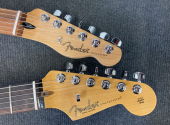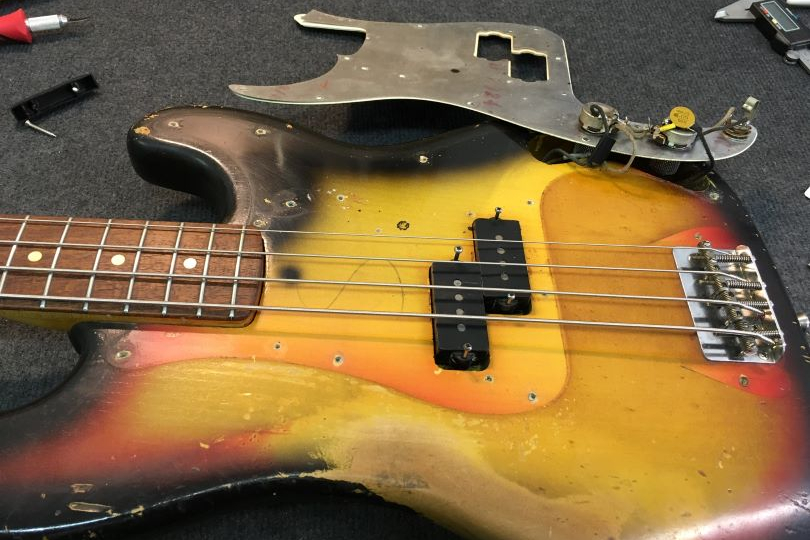
Under the Hood #22: Fender Precision Bass and Its Evolution
In previous articles, I've described the iconic models produced by Fender in the 50s and 60s—the guitars that have continued to influence music up to the present day. However, we must not forget the perhaps even more important and innovative model whose uniqueness slightly surpassed the others of the era. We are talking about the Precision Bass which saw the light of day in 1951.
Firstly, it is important to understand the world music scene at the turn of the forties and fifties. Music was undergoing a relatively rapid development related to the rise of electric guitars, drums and sound systems. Concerts were getting louder and the sound of each instrument became more prominent and therefore more interesting for each member of the audience. Putting aside tweaking problems with the sound and instrument pickups, the question of how the individual instruments could assert themselves within the whole band was crucial at the time.
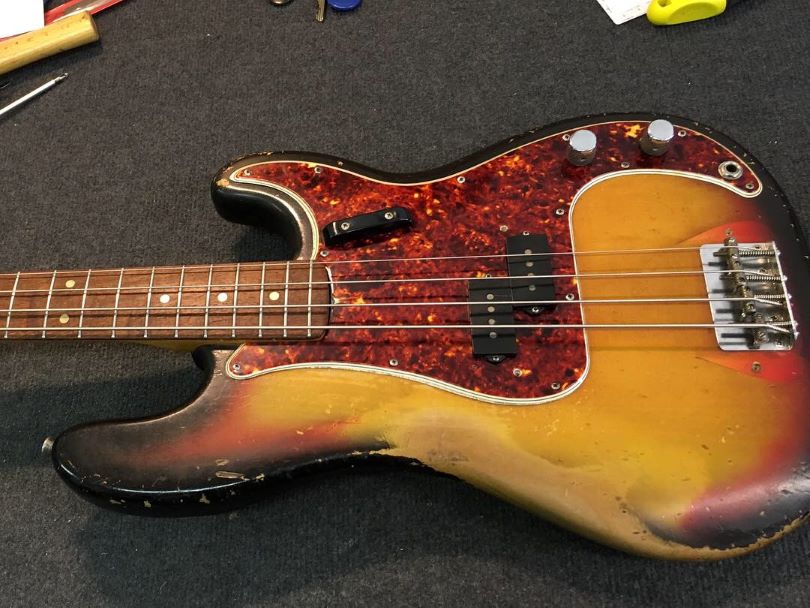
Why was Precision Bass created?
The electric guitar provided guitarists with a whole new sound dimension. They could be heard alongside the drums, accompanying and soloing. Thanks to microphones, vocals were no longer a problem either. But within this new sound intensity, one essential instrument still didn’t have enough space—the bass.
Until then, bands used the double bass. It could produce a beautiful and full sound, but when other instruments started to be amplified, it ceased to be sufficient. Another problem was the size of the double bass. After all, it was not very practical to travel with such a large instrument. To this day, I admire musicians travelling with double bass on public transport.
So it was necessary to come up with something new, innovative, effective and practical—a task tailor-made for Leo Fender and the people around him.
The period of experiments and trials finished until October 1951. By then, the Telecaster (Esquire, Broadcaster) was slowly but surely making its way into the guitar world, which was a pretty big deal at the time. However, Leo Fender came up with a much bigger innovation—the Precision Bass model.
This model changed the world of bass guitars. Suddenly, the instrument was as big as a guitar and at the same time, it could be properly heard. It met all the criteria of true musical innovation. To this day, it has been produced with only minor changes. It was the kind of instrument that didn't need much change. In this respect, it is similar to the Telecaster—a simple instrument that is satisfying in every way.
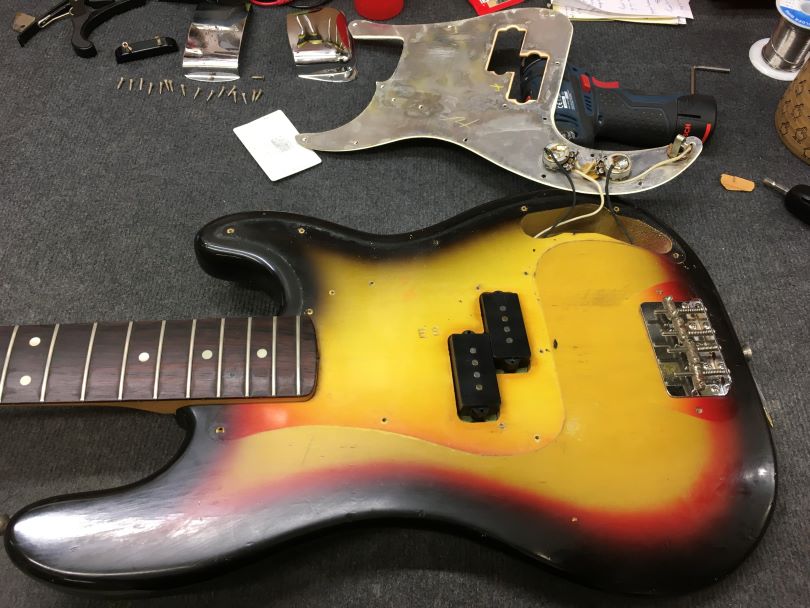
The first Precision model
Since 1951, the Precision Bass has undergone three major modifications that are still being used today. These modifications are not radical, but they mean a lot to the history and evolution of the "pretzel," which is nicely documented in Jeff Owens' article for the Fender website.
The first models, produced from 1951 onwards, share many features with the Telecaster. Although it has the typical yellow finish, the original models from these years have very attractive and varied shades due to the use of nitrocellulose lacquer.
The body shape was quite bold for 1951: the lower body horn was based on the Telecaster but the upper horn was a novelty. Appearance-wise, it was a very good design solution for the body but the main advantage was in practicality. A strap handle was placed on the top horn and because of the long neck, it was easier to balance the bass when playing standing up.
The scale was set at 34 inches, making it 8 and a half inches longer than on the Telecaster. The neck had 20 frets.
The body was made of ash and the neck was a single piece of maple (this construction was identical to the Telecaster). The neck was bolted to the body with four screws which ensured a stable connection. The edges of the body were not rounded in the early years of production. The Precision's headstock was also based on the Telecaster in shape and there were two potentiometers as well.
Originally, the bass had one single-piece pickup designed specifically for bass guitar. There were two saddle stones on the bridge, each of which was used for two strings at the same time. The black pickguard was asymmetrical on both sides of the strings and covered both corners of the body. The pickguard had a hand rest under the strings. The strings connected to the bridge ran through the body.
The adjustable end of the bracing was located at the foot of the neck at the joint between the neck and body which was typical of Fenders of the 1950s and 1960s. Unfortunately, anyone who wanted to adjust the neck deflection had to disassemble the neck from the body of the guitar, readjust the bracing, bolt the neck on, tune the strings, and double-check the whole setup. If it still wasn't right, the whole process had to be repeated until the setup was perfect.
First revision
The first revision of the Precision came in 1954. The changes were related to the introduction of the Stratocaster, which shared several features with the Precision and thus the bass began to shift away from the Telecaster.
The main change was a different colour of the lacquer. The classic yellow was replaced by a two-tone sunburst. The ash body had distinctly rounded edges (contoured body) and was even closer in shape to the Stratocaster. This made it more comfortable to play as it conformed better to the human body. The original pickguard was replaced by a single-layer plastic one in white. The saddle stones were now made of steel and the serial number placement was changed.
Second revision
The second and most important revision of the Precision design came in 1957. The headstock shape now looked more like a Stratocaster. The pickup was split into two coils which solved the problem of the high hum of the classic single-coil pickup. The electronics controls were now placed on an aluminium pickguard that was extended to the potentiometers and included an output jack. Another important change was the design of the bridge—the strings no longer passed through the body but were anchored directly in the bridge behind the saddle stones which were also modified. They had a knurled surface now so that the musician could easily adjust the position of the strings.
A very nice model of the 1957 Precision is described in the Vintage Guitar Magazine article.
This design has endured to the present day and defines the typical Precision Bass look and sound. Other changes in design or materials were related to general changes in Fender. Three-tone sunburst (red, yellow, black) was introduced in 1958, rosewood fingerboard in 1959, nitro lacquer was discontinued in 1968 and so on. These detailed specifications of the Precision but also other Fender models can be found, for example, on the Guitarhq website. For the sake of completion, I would like to add that since 1970, it has been possible to get a fretless version of the Precision Bass.
In 1974 the armrest was moved to the upper body. Until then, it was on the bottom of the body.

Concept and development of Precision Bass since the early 1980s
In the 1970s, more and more musicians were playing the Precision and you can hear this bass on many important recordings, such as those by Pink Floyd. The list would certainly make for another article.
As we've covered in previous episodes of our series, the direction of Fender's development in the 1970s was not ideal. The quality of the products generally declined and many models underwent not-so-successful changes. But the Precision was still popular.
In the early 1980s, many capable people came to Fender, led by Will Schultz and Dan Smith who completely redesigned the factory concept, production and quality to bring Fender back to the limelight. I described this era in an article about CBS which owned Fender for 20 years until the mid-1980s. I also described the creation of Fender Japan. These two aspects are important to understand why a line of models called American Standard came into existence in the second half of the 1980s.
In 1982, when Fender Japan was founded, they began producing reissue vintage Precision Bass models, which were based on the 1957 and 1962 models. These models were of high quality. In general, the Japanese production from these years saved Fender as such and allowed it to return to the global top once again. In 1985, Fender opened a new factory in Corona and with that, a new chapter of Precision started.
V roce 1987 vychází řada modelů American Standard Precision Bass a určuje kvalitativní laťku pro nadcházející desetiletí. Dokonce vychází po několik let model Precision Bass Plus, který má 22 pražců a aktivní snímače Lace Sensors s možností přepínání sériového a paralelního zapojení.
The year 1987 is also important from another point of view. The Fender Custom Shop was founded. Precision Bass plays an important role in it. For example, order number 0003 was a request for a 1962 Mary Kay-style Precision Bass with gold hardware. From that moment on, the Fender Custom Shop elevated Precision Bass models to works of art.
During the 1990s and after 2000, several modifications of the Precision were released, including anniversary models or special signature models. Precision basses modelled after Roger Waters, Iron Maiden's Steve Harris and Sting have been added to the range.
The iconic photo of Paul Simonon smashing Precision Bass
In 1979, the famous photo of bassist Paul Simonon smashing his Precision Bass was taken during a concert by The Clash in New York. The moment was captured by photographer Pennie Smith, and her image subsequently became iconic. In 2002, Q Magazine named it the best rock photo of all time. The smashed Precision is on display at the Rock and Roll Hall of Fame Museum in Cleveland. I recommend the interview with Pennie, where she talks not only about The Clash and that famous photo but also about other interesting people in the music business.
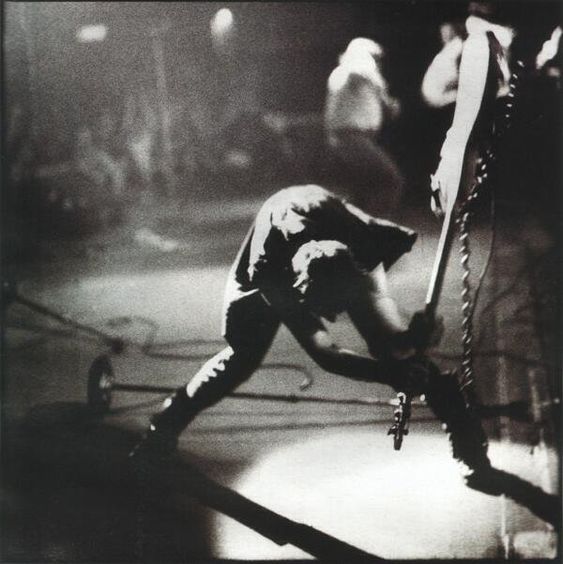
If you have found an error or typo in the article, please let us know by e-mail info@insounder.org.


